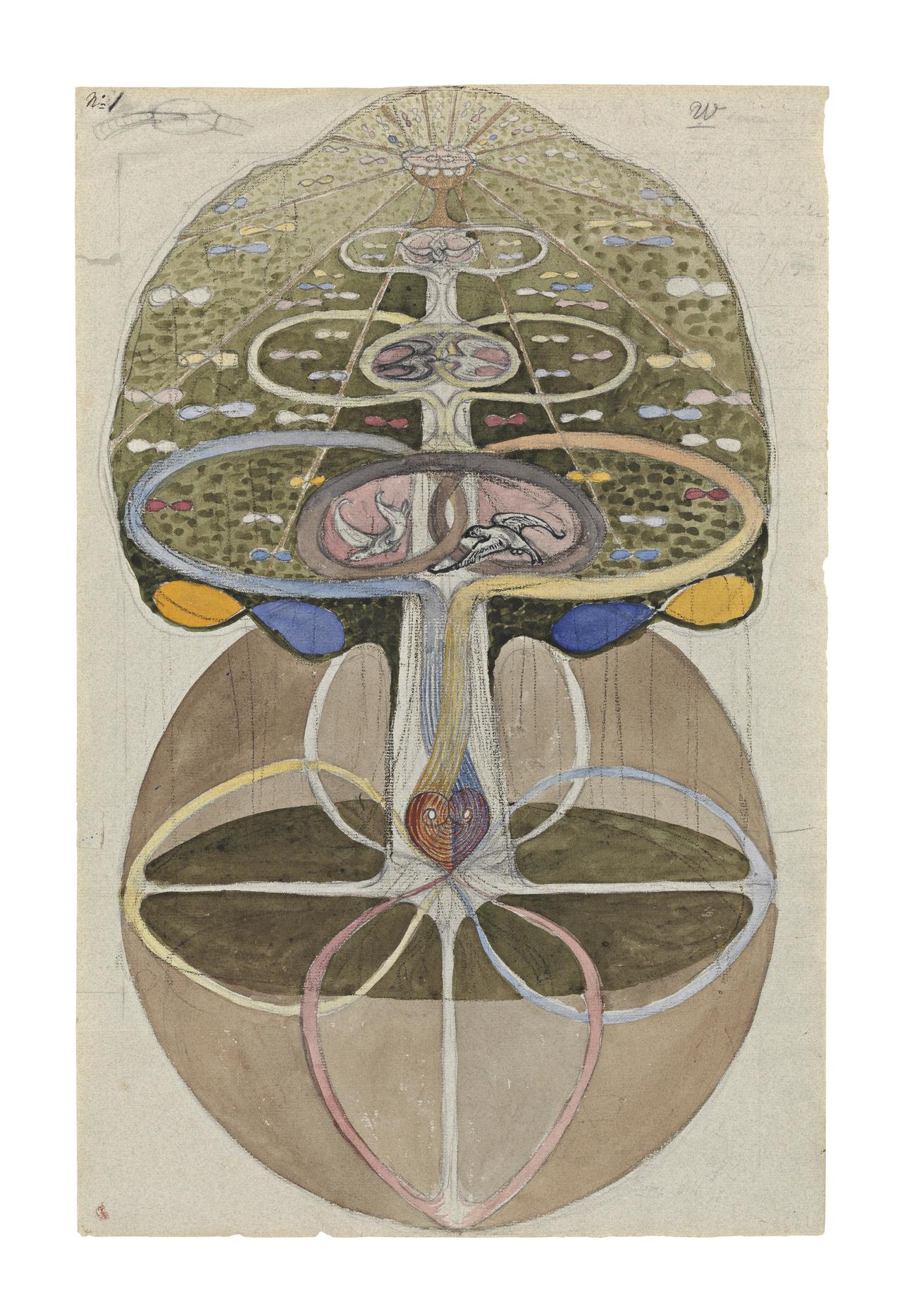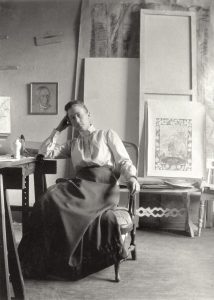Some of y’all are aware that Wassily Kandinksy, popularly considered the first Abstract painter was influenced by the esoteric theories of color and shape propounded by the leaders of the Theosophical Society. Few (INCLUDING ME) are likely aware that Swedish painter Hilma af Klint was creating work under the influence of unseen High Masters decades prior that stands as the first modern Abstract art (certainly one could count the earliest art created by Homo Sapiens and Neanderthals as fairly abstract but that’s perhaps part of the road TO figurative representation and not a conscious abandoning of same).
Here’s an excerpt from TheArtStory biography:
“Af Klint, who was small in height, with blue eyes, usually wore black and was vegetarian, was profoundly changed following an otherworldly experience in 1904. During a séance, she heard a voice telling her to make paintings ‘on an astral plane’ in order to ‘proclaim a new philosophy of life’. This was essentially a celestial commission, “from an entity named Amaliel who told her to paint the ‘immortal aspects of man”. Henceforth, from 1906 at age 44, af Klint embarked on her most prolific phase of abstract painting. Culminating in 1915, she had produced 193 works, each of which belonged to one of six series all over-arched by the larger body called Paintings for the Temple. She refers to this intensely creative period and process as being guided by a ‘force’, driven by a ‘higher power’ in a sort of ‘divine dictation’.
“This continuous creative process was only interrupted between 1908 and 1912, during which time she studied widely and took constant care of her mother, who had recently become blind. At some point during 1908, af Klint invited Rudolf Steiner, who was lecturing in Stockholm, to see her work hoping that he would be impressed (for she in turn was a great admirer of his writing). Much to af Klint’s disappointment and distress, although attracted to individual works, overall Steiner disapproved of the artist’s self-proclaimed role as ‘medium’ and advised her not to let anybody see the paintings for the next 50 years. This may have been a contributing factor for af Klint’s decision stated in her last will and testament that no work could not be exhibited for 20 years after her death, and furthermore, that the paintings could not be sold separately. Although perhaps momentarily deterred, Steiner’s discouragement did not last long and from 1912 onwards Hilma continued to paint the temple series with augmented vigor, always maintaining her public persona of being a landscape artist and keeping her more significant personal work a secret. Faultlessly maintaining the act of conventionality, in 1914 (at the absolute height of her artistic experiments), one of her traditional landscape paintings featured in a Baltic collective exhibition in Malmö, Sweden, the same exhibition where Kandinsky showed five recently painted early abstracts.”
http://www.theartstory.org/artist-af-klint-hilma.htm.
Now, the Pinacoteca Museum in San Paolo, Brazil is hosting an exhibit of her work, “Hilma af Klint: Possible Worlds.” Their website says (Google translation from Portugese follows):
“The São Paulo Pinacoteca, a museum of the São Paulo State Secretariat of Culture, opens on March 03 ‘Hilma af Klint: Possible Worlds’, its first exhibition of the 2018 calendar and one of the great highlights of the year. With the sponsorship of Banco Bradesco and Ultra, an individual exhibition by the Swedish painter Hilma af Klint (1862-1944), whose work has been recognized as a pioneer in the field of abstract art, has been unveiled for the first time in Latin America. century.
“af Klint attended the Royal Academy of Fine Arts, the main center of artistic education in the Swedish capital, but soon distanced himself from his academic training to paint invisible worlds, influenced by spiritual movements such as the Rose-cross, Theosophy, and later Anthroposophy. She was part of ‘The Five’, an artistic group composed of female artists who believed to be led by high spirits who wanted to communicate through images and had already experimented since the late 19th century with writing and automatic drawing, anticipating surrealistic strategies in more than 30 years.
“The exhibition includes 130 works. A highlight of the series entitled ‘The Top Ten’, made in 1907 and considered today one of the first and greatest works of abstract art in the Western world, since it precedes the non-figurative compositions of contemporary artists af Klint as Kandinsky, Mondrian and Malevich. In addition to this set, the exhibition in São Paulo will feature some series of works that were never presented to the public…
“Hilma af Klint: Possible Worlds” remains on display until July 16, 2018, on the first floor of Pina Luz – Praça da Luz, 02. The visitation is open from Wednesday to Monday from 10:00 a.m. to 5:30 p.m. at 18:00 – tickets cost R $ 6 (whole) and R $ 3 (half). Children under 10 years and adults over 60 do not pay. On Saturdays, entrance is free for all visitors. Pina Luz is close to CPTM Light Station.
http://pinacoteca.org.br/programacao/hilma-af-klint-mundos-possiveis/.


